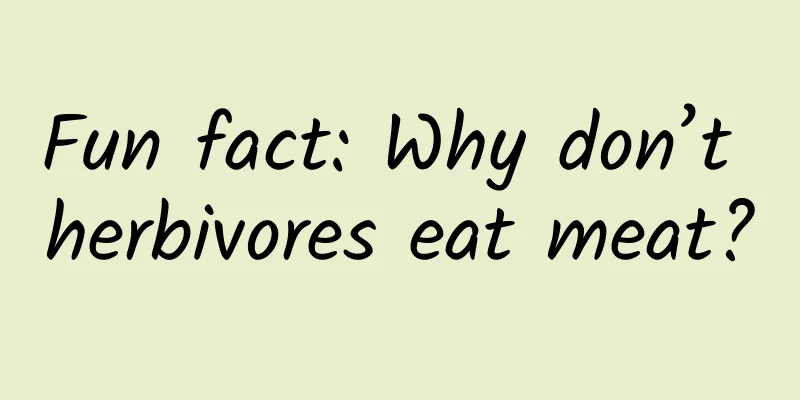If "Children" is written on food packaging, does it mean it is safe and healthy?

|
On April 16, taking advantage of the weekend, Wen Jun, a resident of Chaoyang District, Beijing, came to There is a large supermarket nearby. Shopping for my 3-year-old son ——In just half an hour, Her shopping basket is already filled with all kinds of food. Including pasta, soy sauce, cheese, etc. The outer packaging of these foods All of them are marked with the word "children". Some are still in prominent positions Printed with words like "no additives". “There are too many Additives, flavors, pigments, Afraid that the food will be unhealthy for the children. His father and I are both busy at work. If you study every meal Is it suitable for children's dietary needs? It's not very realistic. 'Children's food' is green and healthy, solving this problem. " Wen Jun told reporters. Copyright image, no permission to reprint Like Wen Jun, Many parents want their children to have a healthy diet. are keen to buy foods labeled "for children". Promoting more and more types of "children's food" The market is getting bigger and bigger. However, many parents do not understand What are the production standards for "children's food"? How is it different from other foods? In fact, At present, there is no Special "Children's Food" category. Is “children’s food” just a marketing gimmick? Or is it really good for children's health? “Children’s food” is expensive "Mom, I want to eat noodles in the shape of little fish." The son pointed at a type of "children's pasta" on the shelf and pulled Wen Jun's trouser leg and shouted. This pasta is made into various cute shapes, including fish in the ocean, cars, flowers, etc. Wen Jun immediately took two packs and put them in the shopping cart. The reporter took a walk around the supermarket and saw that products with the words "children's food" were scattered on the shelves in various product areas, such as children's soy sauce, children's dumplings, etc. These products generally put a lot of effort into the outer packaging: some are brightly colored, some are designed with various cartoon patterns, and are printed with words such as "no additives", "helps growth", and "nutrition". There are also some products that, although not clearly marked as "children's food" in the product name or label, their advertising slogans or outer packaging reveal that they are sold to children. For example, the slogan of one yogurt is "A child's first bite of yogurt." The reporter noticed that there were quite a few consumers buying "children's food" on the spot. Many parents told the reporter that buying products marked with the word "children" "makes people feel at ease." One parent bought four or five packs of "Children's Cheese Sticks" at once. She said: "Since the merchant has marked it as 'Children's Cheese Sticks', the standard should be higher than that of ordinary cheese sticks, and the ingredients should be safer, so I keep buying this one; the child also likes the Elsa (a cartoon character) printed on it." Copyright image, no permission to reprint Moreover, "children's food" is expensive. For example, a certain brand of 300g children's dumplings comes in three different packages: shrimp king series, shrimp and carrots, and children's wontons. The prices range from 19.9 yuan to 34.3 yuan. The same brand of ordinary dumplings displayed next to the counter are priced at 12.9 yuan per kg. Although the portion is much larger, the price is much lower than that of children's dumplings. Wen Jun also clearly felt the high price of "children's food". She admitted that she started buying "children's food" when her son was about one year old, and the expenditure on "children's food" has accounted for more than half of the family's food expenditure. "As long as the children are assured of eating, we will spend our money happily and at ease." "Children's food" is also selling well on e-commerce platforms. The reporter entered the keyword "children's food" on the e-commerce platform and found a wide variety of products, including pasta, desserts, sausages, cheese sticks, etc. Among them, the best-selling product has a monthly sales volume of more than 100,000. Almost all of these products have the words "no added flavors, colors, preservatives" displayed in the title, detail page, product packaging, or promotional photos. The "White Paper on Children's Snack Market Survey" jointly released by the China Non-staple Food Circulation Association, the Food and Nutrition Development Institute of the Ministry of Agriculture and Rural Affairs, etc. predicts that by 2023, the children's snack market will grow steadily at an annual compound growth rate of 10% to 15%. The "2022 Children's Food Industry Research Report" recently released by the Dinchmang Research Institute shows that 84.8% of parents tend to buy food labeled "children" for their children. Many parents are not clear about, nor have they taken the initiative to learn, what kind of food is called "children's food". Xia Qunying, a national second-level public nutritionist, said that children's demands for different nutrients will increase at different ages. Before 6 months, the nutrition a child needs can be obtained from infant formula. After 6 months, the child's demand for iron, zinc, vitamins and other elements will increase. Therefore, only food that can meet the nutritional needs of children at all ages can truly be called "children's food." It’s essentially a marketing strategy On the shelf in the seasoning area of the above-mentioned supermarket, a product called "Organic Children's Soy Sauce" attracted the reporter's attention. The reporter checked the ingredient list and compared it with ordinary soy sauce and found that the ingredients of this children's soy sauce and ordinary soy sauce are basically the same, including water, organic wheat, edible salt, etc., but the prices of the two soy sauces differ by nearly twice. The shopping guide at the scene told the reporter: "In fact, there is no difference between children's soy sauce and ordinary soy sauce." The wide variety of "children's food" makes some parents overwhelmed. Copyright image, no permission to reprint Ms. Liu, who lives in Xicheng District, Beijing, said that advertisements for "children's food" are now everywhere, and each one claims to be "additive-free and suitable for the healthy growth of children." "I wanted to buy yogurt for my child. When I went to the supermarket, I saw some products called XX yogurt, some called XX cheese, and some called XX milk preparation. The words 'children' were displayed on all the products. I didn't know what to buy." "I found that almost all 'children's foods' do not have clear age classifications and consumption instructions, as if labeling them with the word 'children' is foolproof. Some parents around me, like me, make 'blind choices'," said Ms. Liu. Zhong Kai, director of the Kexin Food and Health Information Exchange Center, said that judging from the current market situation, "children's food" is not a food category, but food marketed to children. The reason behind its popularity is the high premium and good profits in the children's market. "Rather than these foods contributing to children's healthy diets, this is more of a marketing ploy." Some "children's foods" are harmful to children's health "Today, many parents do not actually understand what children's nutritional needs are, or what kind of nutrients 'children's food' should have. They just buy so-called 'children's food' on the market based on marketing or following trends. This may cause children to ingest more substances that are harmful to their health when eating, which is not worth the cost," said Xia Qunying. The reporter checked a children's cheese stick and found that the ingredient list showed that the cheese stick contained food additives such as carrageenan, sorbic acid, and edible flavors; the nutritional composition table showed that every 100g contained protein, fat, vitamin A and a large amount of sodium. "Excessive sodium levels may increase the risk of high blood pressure in children." Xia Qunying said that some so-called "children's foods" not only have ingredients that are not much different from ordinary foods, but may even be harmful to children's health. For example, some formula milk products contain too many sweeteners, flavors, pigments, etc., which will interfere with the development of children's taste nerves; excessive intake of additives such as sorbic acid and citric acid will affect calcium absorption. In her opinion, all current "children's foods" are actually highly replaceable and can be replaced through daily reasonable diet and matching. When she was taking care of her 5-year-old daughter's diet, she never purchased any "children's food" other than milk powder and rice noodles. "Ordinary ingredients, when scientifically and rationally matched, can fully meet the needs of children's healthy growth. Rather than 'children's food', parents need to increase their knowledge of children's diet." Copyright image, no permission to reprint Health standards for "children's food" are being established In fact, my country currently does not have a special classification for "children's food", and "children's food" lacks specific laws and regulations and national food safety standards. However, relevant standards such as the "National Food Safety Standard for Infant Formula", "National Food Safety Standard for Older Infant Formula", and "National Food Safety Standard for Toddler Formula" are mostly aimed at the "infants and toddlers" group, covering infants and toddlers aged 0 to 36 months. In May 2020, the China Non-staple Food Circulation Association issued the "General Requirements for Children's Snacks", which standardized children's snacks in terms of raw materials, sensory organs, nutritional ingredients, etc., filling the gap in domestic children's snack standards, but this standard is not mandatory. In recent years, the gap in health standards for "children's food" has attracted attention from all walks of life. At this year's National People's Congress, Gao Jie, a member of the National Committee of the Chinese People's Political Consultative Conference, suggested that legislation should be strengthened specifically for food packaging labels for minors, and that national and industry standards should be improved; that the special classification of "children's food" should be clarified, and that clear regulations should be made on nutritional labeling, food additive requirements, and food safety standards for foods for minors. Yao Juan, a deputy to the National People's Congress, said in her "Suggestions on Promoting the Standardization, Regularization and Healthy Development of Children's Food" that a sound "children's food" standard system should be established to guide the "children's food" industry from standardization during development to development during standardization. It is recommended to establish a series of standards such as "Children's Frozen Foods", "Children's Pre-prepared Meals (Specific Dishes)", and "Children's Pastries", and gradually establish and improve a "children's food" standard system based on children's main meals, children's snacks, and children's snacks. Relevant departments have also paid attention to the health standards of "children's food". On March 23 this year, an expert seminar on nutrition standards for healthy and safe food for Chinese children and adolescents was held. The meeting revealed that the key task of the China Children and Adolescents Health and Safety Food Management Committee in 2022 is to promote the formulation of nutrition standards for the physical health of children and adolescents. The newly launched standards will be divided into several stages according to the age of adolescents and children, namely 0 to 6 years old, 6 to 13 years old, and 13 to 18 years old. They will regulate the specific requirements for healthy and safe food for adolescents and children from seven aspects, including safe nutritional ingredients, sensory, physical and chemical, microbiological, pollutant and mycotoxins, so that the safety of food for adolescents and children has regulations to follow. Wang Yuyu, professor at the School of Economic Law of Southwest University of Political Science and Law, believes that in addition to the existing safety standards for food for infants under 36 months old, other "children's foods" should establish a scientific standardized certification system like green food, organic food and children's medicines to meet the special needs of children's physical, bone, brain and other growth and development. In Zhong Kai's opinion, it is very difficult to set corresponding standards for "children's food" at present. "From a professional perspective, it is difficult to propose safety indicators (including additives) that are different from those of ordinary food. Behind the possible unhealthy problems of "children's food" at present are the issues of reasonable matching and moderate consumption that cannot be ignored." Therefore, he suggested that, on the one hand, marketing activities targeting children should be regulated; on the other hand, consumers, especially parents, should be educated to make correct choices and combinations in their children's diet. Xia Qunying suggested offering more nutrition courses: hospitals need to set up more nutrition courses, mainly targeting pregnant women who seek medical treatment, and establish a phased online course or offline science popularization from pregnancy to after the birth of the child; in addition, nutrition classes can be added to early childhood education classes and kindergartens to let children understand the importance of nutrition from an early age. Have you ever bought "kids food"? Source: Science Popularization China WeChat Official Account The watermarked images and cover images in this article are from the copyright gallery, and the image content is not authorized for reprinting |
>>: Do dung beetles also "pick up poop"? Why do they roll dung balls?
Recommend
How much gravity do two adults generate when standing at opposite ends of the Earth?
It takes about 1 Newton of force to lift a 100-gr...
Is the weather forecast always a lie? AI makes the weather more predictable
We are probably accustomed to the real-time weath...
What? I've been picking pine cones for so many years, and you tell me it's not a fruit?
There is a "pine cone tower" hanging ne...
Finally supports multiple devices online at the same time! Detailed experience of the new version of WeChat
WeChat has a new version. You know what, this upd...
Could this bowl be a "death bowl"? I didn't expect it to be so harmful! Throw away any bowls at home
Expert of this article: Yang Chao, PhD in Chemist...
[Exclusive for lazy people] Universal RecylerAdapter, built-in XRecyclerView, compatible with pull-up and pull-down and animation, high reuse, universal for all pages, support empty pages
Hello everyone, Guo Laoshi is here again. I used ...
Analyst: China's business has become a burden for Apple
A new year brings new prospects, and so does Appl...
Cadillac's second-tier luxury car sales are far ahead, and the competition for the second place is becoming more and more intense
Tariff adjustments are changing the current compe...
This little black box can crack the passcode of almost any iPhone
It doesn't matter whether you add a fingerpri...
Be careful of such chicken feet, as eating them has a great impact on human health!
Do you have any doubts when buying instant chicke...
Tang Qianyuan's "Scale" Intensive Reading Class
15 lectures to thoroughly read this masterpiece a...
Zhiji L6 is officially on the market. How long can the extreme price war strategy of increasing configuration and reducing prices last?
April is traditionally a slow season for Chinese ...
User retention: How to improve user stickiness?
Do you remember the last time you vowed to stick ...
Share 4 websites that make you rich quietly, and see different Taobao customers
Let me share with you 4 websites that can help you...
Mercedes-Benz sold 57,700 vehicles in China in April, setting a new sales record for the same period in history
The Xi'an Mercedes-Benz oil leak incident not...









